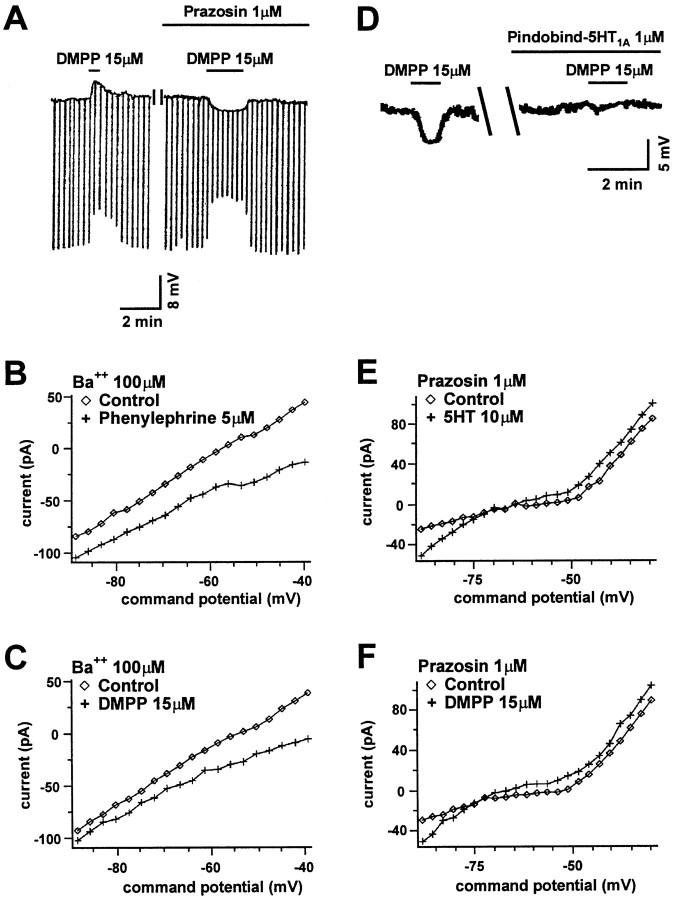Fig. 3.
Both pharmacological and electrophysiological evidence suggests that noradrenergic α1 receptors and serotonergic 5-HT1A receptors mediate the nicotinic depolarizing and hyperpolarizing responses, respectively. A, Two voltagetraces illustrate a blockade of the DMPP-induced depolarizing response that reveals a hyperpolarizing response by exposure to the α1 antagonist prazosin added to the bath medium.B, A graph of current versus membrane potential shows the change in the neuronalI–V relationship when the α1 agonist phenylephrine is applied to the perfusion medium. C, Agraph similar to that described in B is shown except that DMPP was used in place of phenylephrine to show the similarity of the change induced in theI–V curves by these two agonists. (Barium was present in B and C to block the hyperpolarizing response.) D, Two voltagetraces taken during perfusion with prazosin (1 μm) show the DMPP-induced hyperpolarization that is blocked by the 5-HT1A antagonist pindobind-5-HT1A. E, F, Agraph of I–V curves shows the effect of 5-HT (E) and can be compared with the I–V curves showing the effect of the hyperpolarizing response to DMPP (F). In both cases, the agonists induce an inwardly rectifying current that reverses near the potassium equilibrium potential.

